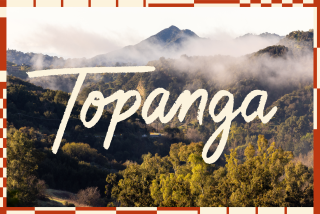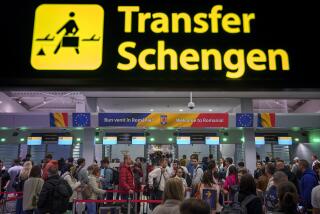Liechtenstein, a principality tucked into the Alps
In most hotel rooms, you find a little bit of sightseeing information. The room I booked at a hotel in Liechtenstein -- where tax-sheltered banking generates almost a third of the gross domestic product -- had a brochure on asset management.
I didn’t stay there because it was right by a noisy road, but I pocketed the brochure, just in case.
There are, of course, sights to see in the little German-speaking principality, tucked into the Alps between Switzerland and Austria.
The Rhine River runs wide and icy-white along the western border, and the prince’s cross-timbered castle nestles in an aerie on the mountainside.
At seemingly every turn, there are trail heads and bike paths.
Pretty, flower-wreathed towns dot the lowlands.
A winding road leads east into the mountains, through a tunnel and across meadows to the ski area of Malbun, which attracts outdoorsy families in the summer.
But in my head all the while I was here I kept hearing the hum of secret corporate accounts earning tax-free dividends instead of “The Sound of Music.”
I drove to Liechtenstein from Zurich, Switzerland, a scenic trip around lakes and across Alpine valleys that takes less than two hours. When I turned off the highway headed for Vaduz I passed dairy farms, Swiss chalets and an industrial zone neater than a pin where factories make calculators and dentures.
Vaduz turned out to be a modern town with a pedestrian-only main street lined by sidewalk cafes. After leaving the first hotel, I went to the visitor information booth there to find another place to stay. The helpful attendant got me a room in the town of Balzers near the principality’s southern border and talked me into buying a ticket for the motorized Vaduz City Train, an It’s-a-Small-World-After-All attraction that reveals the town’s charms in 15 minutes.
After the train ride, I toured the National Museum, which tells the story of Liechtenstein from prehistory to the Middle Ages, when it passed through many hands until its purchase by a family of Austrian nobles around 1700. The acquisition came with a princely title, though the family waited more than 100 years to move to Liechtenstein.
Some of the princely family’s modern art is on display at the nearby Kunstmuseum, along with temporary exhibitions. But the museum’s best surprise is its first-floor sushi bar, where I had an early dinner before trying to find my hotel.
The road from Vaduz to Balzers is a disconsolate suburban strip. But the mountainside town is affable, made up of well-tended houses surrounded by horse pastures and gardens, the kind of place where you could send your kids out to play with no worries.
The next day I drove around Liechtenstein, bought a half-case of red wine from the princely family’s vineyard near Vaduz and finally broached the front door of LGT, the royal family’s bank, where I asked a customer service representative if I could open an account.
He looked at me strangely and asked where I was from.
When I told him I was American, he said I couldn’t open an account in Liechtenstein because of U.S. banking regulations, but I’m pretty sure it was my Birkenstocks.
More to Read
Sign up for The Wild
We’ll help you find the best places to hike, bike and run, as well as the perfect silent spots for meditation and yoga.
You may occasionally receive promotional content from the Los Angeles Times.






